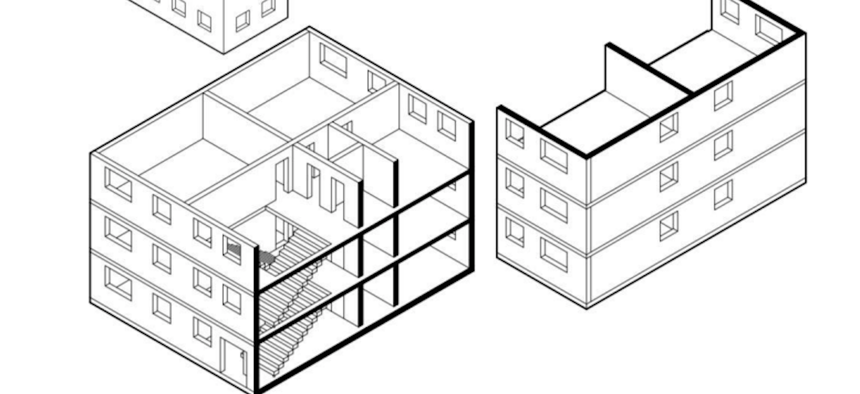
From the presentation AI/ML Floor Plan Predictor – Primer by Christian Lance Relleve, Christian Lance Relleve,
This Army Reservist’s Formula Predicts the Inside Layout of Buildings from Satellite Photos
The ability to predict the placement of stairs, rooms, etc., could be a big help to tactical teams.
When Navy SEALs or other operators plan raids, a lot of work goes into bringing down the number of unknowns—say, how many people are in the house, or where they might hide to stage an ambush. A new formula promises to help with the latter by predicting a building’s internal structure from its external appearance.
The formula was one of the five winners of the most recent Dragon’s Lair competition, a search for innovative ideas held quarterly at the Army’s Fort Bragg in North Carolina. It was developed by Christian Lance Relleve, a Navy architect who is also a second lieutenant in the Army Reserve.
Factors such as building materials, symmetry and the placement of entries and exits can indicate the location of key internal features like stairs, and supporting walls, even bathrooms. Small and high-placed windows are much more likely to be bathrooms whereas larger ones are more likely to be offices, etc. The roof color also suggests the material used and the location of supporting structures underneath. Relleve told Defense One that countries run by autocratic regimes, in particular, make heavy use of repetition: a string of buildings of similar size and shape are likely to have similar internal plans.
Relleve began working on the formula in 2019 and soon drew the attention of defense contractors. Instead of selling it, he sought military support to keep developing to develop it on his own.
He said that his formula can predict a more-or-less symmetrical building’s internal structure with roughly 70 percent accuracy, but he acknowledged that it doesn’t work well for buildings that are asymmetrical.
The next step will be to apply machine learning to the dataset of building types and features to train algorithms to predict internal layout more accurately and quickly.
The military has said that urban warfare will be a defining characteristic of future conflict. Being able to predict the layouts of buildings would be a big boost to not only dismounted tactical teams of soldiers but also in planning more precise drone strikes. He next wants to work on an “economy of force” calculator to output predictions for how much human or fire-power might be needed to destroy a certain target in a certain location causing minimal risk to surrounding entities.
NEXT STORY: Navy to Start Ejecting Unvaccinated Sailors







